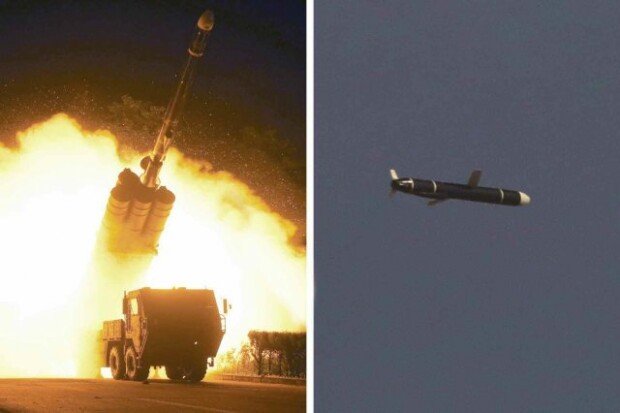Seoul must stop neglecting Pyongyang’s provocation
Seoul must stop neglecting Pyongyang’s provocation
Posted September. 14, 2021 07:55,
Updated September. 14, 2021 07:55

North Korea announced that it had successfully test-fired its new long-range cruise missiles on Saturday and Sunday. The Korean Central News Agency declared Monday that the missiles “flew 7,580 seconds (126 minutes) and hit the target of 1500km on oval and 8-shaped trajectories set up within the territorial land and waters” of the North. South Korean military and the presidential office of Cheong Wa Dae said they are “analyzing it under the coordination between Seoul and Washington” and “closely monitoring” while the United State Indo-Pacific Command denounced the North’s latest provocation as “posing a threat to its neighbors and the international community.”
This marks the third time that the communist regime has blasted a cruise missile this year, suggesting that the North’s missile scope is expanding from ballistic only to cruise and that its missile capacity is growing ever more sophisticated with its range much more extended as well. Indeed, Pyongyang has demonstrated a versatile capacity in terms of the missile range and operational flexibility. This time, they went one step further, with a low-altitude cruise missile capable of bypassing the air defense network for precision strike and travelling to Japan.
The latest missile test form the North is the first in six months since its short-range ballistic missiles test on March 25. Unlike ballistics, cruise missiles are not subjected to the UN’s North Korean sanctions. Apparently, Pyongyang is trying to test the waters with a mild provocation before the impending tripartite meeting over the North Korean nuclear program and the visit by Chinese Foreign Minister Wang Yi. Cruise missiles fly slow as they are unmanned aerial vehicles loaded with bombs. But they are hard to detect with radar, much more precise, and far more likely to be armed with miniaturized nuclear weapons. At the January party congress, North Korean leader Kim Jong-un declared the development of “a set of cutting-edge tactical nuclear weapons including mid-and long-ranged cruise missiles.”
While the North is intensifying the level of threats, the South Korean government appears to be rather relaxed. The military authorities in Seoul are keeping it a secret if the sign of test had been detected before or after the act. While the communist regime fired short-ranged cruise missiles on Jan. 22 and March 21, but the South remained hushed. Even after the firing was revealed in the news later, it was considered as a “typical military activity” rather than a severe provocation.
This time, however, the North has declared the feat of its long-range capacity to the world. Even the Indo-Pacific Command sounded an alarm of warning. But the South keeps claiming to be “still analyzing” like a broken record. Let alone making a fuss, there isn’t a single word of regret or concern. Neither is there any effort to relieve the public in the South when it has enough capabilities to counter North Korean cruise missiles. It is no surprise that the North is having a field day amid this impasse between dialogue and confrontation and gaining more time for its nuclear ambition.







